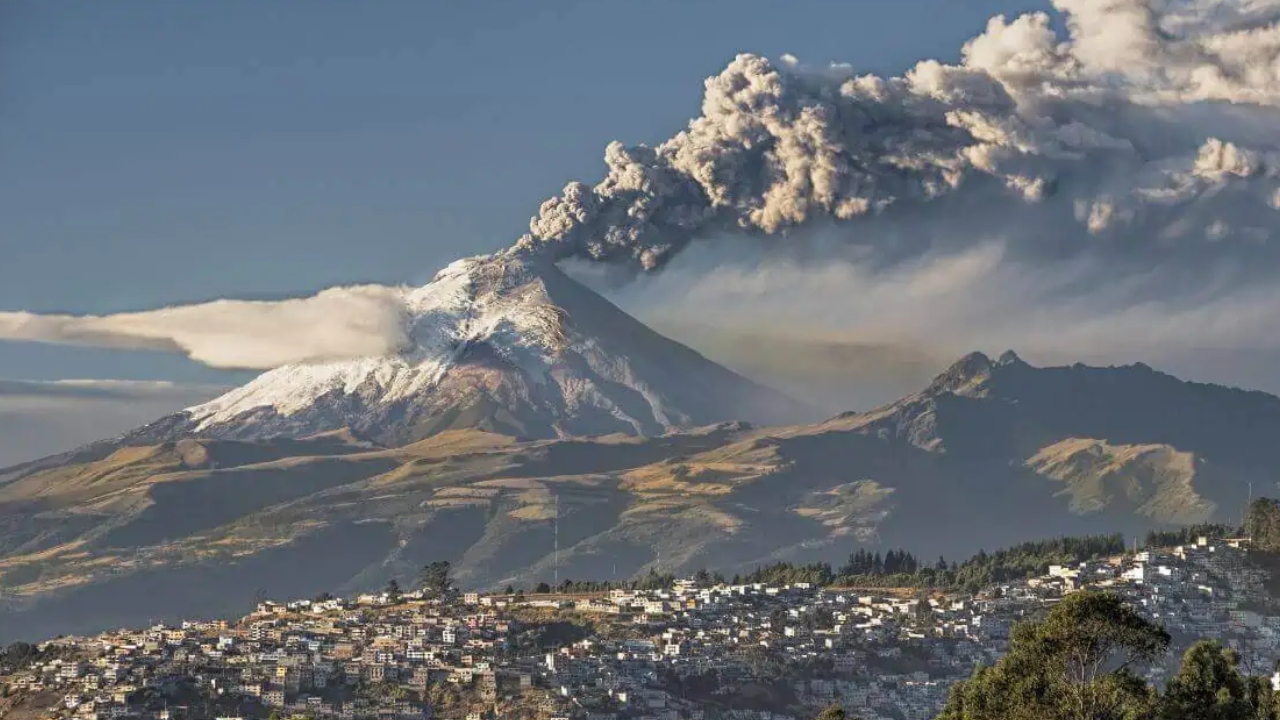Volcano breath test helps scientists predict deadly eruptions

Humanity has a long history of living in the shadows of active volcanoes.
Prized for their rich, fertile soils – ideal for cultivating crops – and their local topography, it isn’t hard to see why living in active volcanic regions remains a worthwhile gamble.
Volcanic eruptions, however, are notoriously difficult to predict but improving our diagnostic abilities is crucial for developing early warning procedures and evading disaster.
External indicators such as earthquakes and deformation of the Earth’s crust are traditional methods of identifying an imminent eruption, however, not all eruptions give these early warning signs.
But now a research team from the University of Tokyo has gained better insight into the relationship between changes in the magma composition and eruption, by studying the ratio of specific chemical isotopes in gas and steam emitted from fumaroles — holes and cracks in the earth’s surface.
“When you compare a volcano with a human body, the conventional geophysical methods represented by observations of earthquakes and crustal deformation are similar to listening to the chest and taking body size measurements”, said Professor Hirochika Sumino from the Research Centre for Advanced Science and Technology, who led the study.
“In these cases, it is difficult to know what health problem causes some noise in your chest or a sudden increase in your weight, without a detailed medical check. On the other hand, analysing the chemical and isotope composition of elements in fumarolic gases is like a breath or blood test. This means we are looking at actual material directly derived from magma to know precisely what is going on with the magma.”
Previous research on gas associated with an eruption from a volcano in the Canary Islands in 2011 showed an increase in the ratio of heavier helium isotopes which are typical of mantle material.
“We knew that the helium isotope ratio occasionally changes from a low value, similar to the helium found in the Earth’s crust, to a high value, like that in the Earth’s mantle, when the activity of magma increases,” said Sumino. “But we didn’t know why we had more mantle-derived helium during magmatic unrest.”
Sumino and team sought the answers in fumerole gas around Kusatsu-Shirane, an active volcano 150 km northwest of Tokyo. Taking samples of the gas back to the lab every few months between 2014 and 2021, the researchers were able to ascertain precise measurements of the isotopic components, discovering a relationship between the ratio of argon-40 to helium-3 ( a ‘high value’ isotope of helium) and magmatic unrest.
“Using computer models, we revealed that the ratio reflects how much the magma underground is foaming, making bubbles of volcanic gases which separate from the liquid magma,” explained Sumino.
The extent to which the magma is foaming “controls how much magmatic gas is provided to the hydrothermal system beneath a volcano and how buoyant the magma is. The former is related to a risk of phreatic eruption, in which an increase in water pressure in the hydrothermal system causes the eruption. The latter would increase the rate of magma ascent, resulting in a magmatic eruption.”
The research collaboration is now developing a portable type of mass spectrometer which could be used in the field for real time analysis, reducing the need to constantly collect and transport samples back to the lab – a challenging a time-consuming process.
“Our next step is to establish a noble gas analysis protocol with this new instrument, to make it a reality that all active volcanoes — at least those which have the potential to cause disaster to local residents — are monitored 24 hours a day, seven days a week,” said Sumino.
This article originally appeared on cosmosmagazine.com and was written by Clare Kenyon.
Image: Getty
